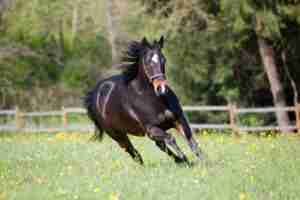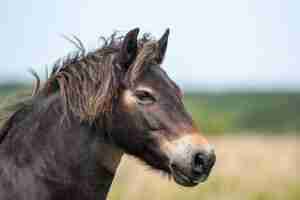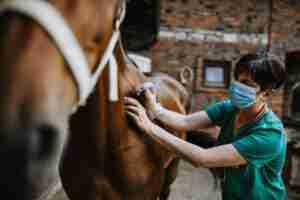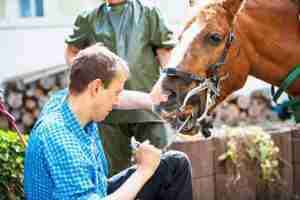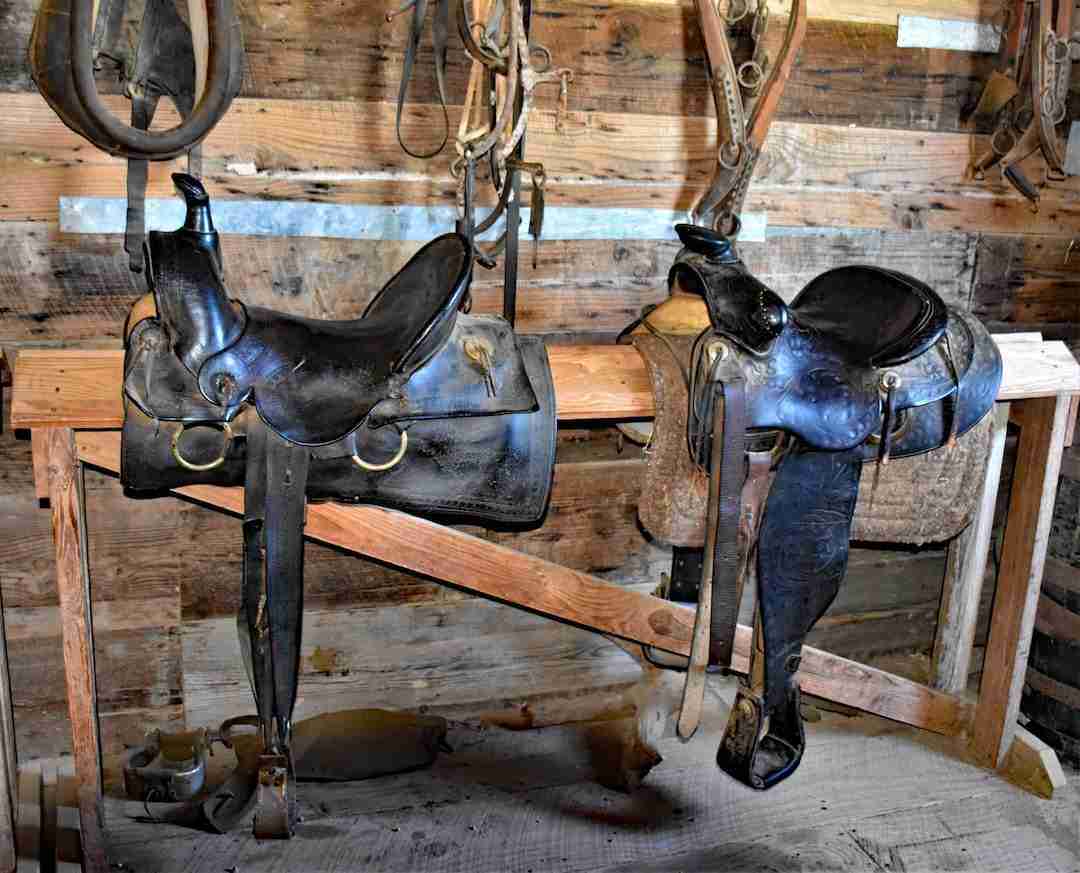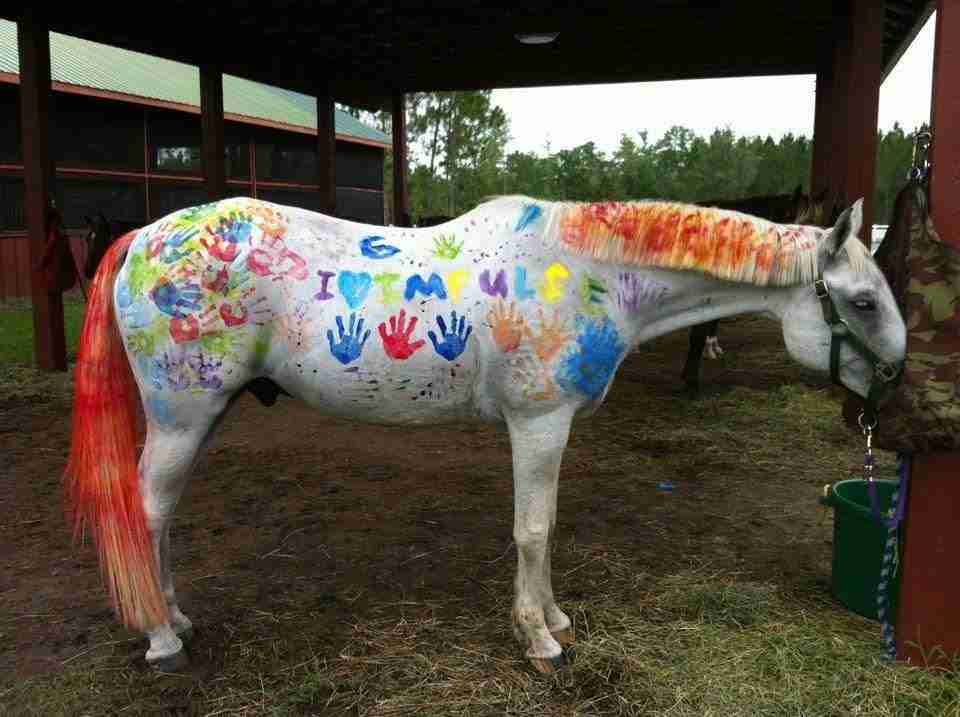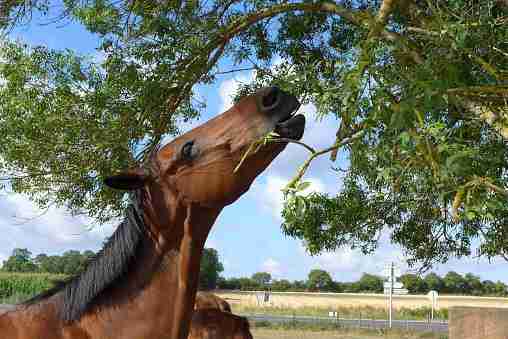The abbreviation for “Off-Track Thoroughbred” is “OTTB.” This refers to a Thoroughbred horse once employed for racing but is no longer used on the track. These horses can sometimes come with baggage from their racing careers, such as physical injuries or behavioral issues. They may also require more specialized care and training than other horses, which can be expensive.
Additionally, not all OTTBs are suitable for all riders or disciplines, so it’s essential to research and ensure that the horse is a good fit for you and your goals. For example, if you’re not an experienced rider or trainer, it may be best to look for a different type of horse. Let’s consider the 10 best reasons not to buy an OTTB horse.
1. OTTB Horse Health And Behavior Issues
Many OTTBs have been bred and trained specifically for racing, which can put a lot of stress on their bodies. This can lead to various medical conditions, such as chronic pain, respiratory problems, and lameness. As a result, OTTBs may require specialized medical care and rehabilitation to properly treat these conditions.
Problems with the joints, like osteoarthritis and degenerative joint disease, as well as problems with their muscles and lungs, are common in OTTBs. Therefore, the owner of an OTTB needs to work closely with a veterinarian to find and treat any possible health problems.
Physical Problems Because Of Racing
Because speed was the primary factor when breeding these animals, thoroughbreds are prone to severe injuries and health problems. For example, 10% of Thoroughbreds will develop orthopedic issues from fractures, bumps, and bruises on their legs.
According to recent estimates, 1.5 horses out of every 1,000 that begin their racing careers in the United States will suffer a breakdown that will end their careers due to injury. This equates to about two horses per day on average.
The fact that Thoroughbreds begin their racing careers as 2-year-olds, well before they are fully mature, may contribute to a high injury rate. This is because their bones are not fully developed, even though they appear fully grown and in excellent physical condition.
OTTBs Have Behavior Problems
Many behavioral issues have been linked to horses being kept in stalls for prolonged periods. For example, thoroughbred racing horses are frequently stalled for up to 23 hours per day, most likely the root cause of the many behavioral issues associated with racing horses.
Aggression (sometimes directed at humans), fear, phobias, poor performance, abnormal eating, and stall stress are horses’ most common behavioral problems. The most common types of equine anxiety are sound and place phobias.
Behavior issues like those associated with trailers may stem from neophobia (the fear of new situations). Because OTTB horses spend most of their time racing or confined in stalls, these animals are more likely to exhibit neophobic tendencies.
OTTB horses are accustomed to crowds and noise, whereas a regular horse has experienced things a racehorse has not. Because they are not used to “a normal horse life,” taking them home could cause problems and take time to fix.
2. They Are Used To The Best Treatments, Upkeep, And Stable
Racehorses have access to the best veterinarians and equine dentists. Because they are accustomed to having their hooves meticulously cared for. They require the services of a Ferrier to keep their hooves in good condition after their racing careers have ended.
Like all horses, off-the-track thoroughbreds (OTTBs) require proper care and management to ensure their health and happiness. This includes providing them with the means to maintain a balanced diet, engage in regular physical activity, and reside in safe and sanitary surroundings.
OTTBs typically need a secure location with lots of room to walk about and exercise for their housing and living needs. Additionally, having access to turn-out places where they may enjoy the sunshine and fresh air may be advantageous.
Because of their unique origins and histories, care and management may need to be adjusted to keep them happy and healthy. Therefore, seeking advice from a veterinarian and equine expert is crucial when creating a care schedule for your OTTB to satisfy their needs.
3. OTTBs Have Specific Diet Requirements
OTTB horses don’t typically have a specialized diet or feed that fits all their needs. Instead, they have unique energy and caloric needs that can vary depending on environmental factors or their current condition.
OTTBs typically benefit from a diet that consists of low carbohydrates and sugar and is high in fat and protein. Thoroughbred horses require high-quality forage equal to at least 2% of the horse’s body weight (or approximately 20 pounds) daily. If your OTTB needs to gain weight, you should consider giving it canola oil and other dietary supplements like salt and biotin.
OTTB horses may struggle to gain weight or maintain their current body condition. The ideal mixture includes an alfalfa mix, plenty of grazing time, and the occasional addition of molasses-free soaked beet pulp.
4. OTTB Horses’ Lifespan May Be An Issue
When a racehorse is retired before its time, it is said to have been “wasted.” Although most racehorses live for 25-30 years, they can only compete for about 2 – 3 years. All racehorses will eventually stop competing, regardless of age or reason for retirement. Because of their short career and possible injuries, you may end up spending a lot more on an OTTB over its lifespan in comparison to other horses.
Because these horses were bred and used for sport and profit in an industry worth billions of dollars, the public expects that they will be adequately cared for in their post-racing lives. For this and other reasons, the public has exceptionally high expectations for this horse breed.
Due to the physical demands of racing, OTTB horses may be more susceptible to specific health issues. Therefore, their owners must provide the necessary care and support to help them live long, healthy lives.
5. Retraining An OTTB Has Many Challenges
Retraining an OTTB can be challenging for a few reasons. First, these horses are often used to living in a racing atmosphere. As a result, they may need to acclimate to a more leisurely pace and new forms of activity. They may also have physical concerns or injuries that must be addressed before getting ridden.
Additionally, OTTBs may have developed habits or tendencies prevalent in racehorses but not acceptable in other disciplines, such as yanking on the reins or bolting. This can require specific training and time to rectify. Overall, retraining an OTTB can be a gratifying process. Still, it can also be time-consuming and demand a lot of effort.
The first step in retraining an OTTB is having the horse examined by a vet and a trainer. You can then determine whether the problem is one of health or behavior. Retraining can commence once a strategy for fixing any issues has been developed. Typical first steps in this direction include lunging and long-lining the horse to gain stability and muscle through groundwork activities.
The next step is to begin riding; you can work up to more complex maneuvers. Again, it’s best to go slow and give the horse time to become used to its new routine. The key to properly retraining an OTTB is consistency, patience, and positive reinforcement.
6. OTTBs Sometimes Have Trust Issues
Trust problems are frequent among OTTBs, especially those with bad experiences in the past. Like any other animal, a horse that has been abused or has had a traumatic experience may develop trust issues. This might lead to feelings of unease or panic in social settings. When interacting with an OTTB with trust issues, it’s crucial to be patient and empathetic.
Maintain a regular routine with the horse, and don’t force it to do anything it’s uncomfortable with. With the proper care, time, positive reinforcement, and gentle training, many OTTBs can be rehabilitated to trust humans again and live an average horse’s life.
7. Experienced Trainers Are Required To Retrain An OTTB
An OTTB can be retrained by any trainer who has knowledge of retraining and rehabilitation methods and has experience working with OTTBs. Depending on the type of equestrian competition you intend to enter, you may need the services of a trainer who specializes in OTTBs, dressage, show jumping, or even eventing.
Finding a trainer with experience retraining OTTBs who understands the specific challenges and requirements of this breed is crucial. You might look for a trainer associated with groups that assist OTTB retraining and adoption, or you can ask other OTTB owners or trainers for referrals.
8. OTTBs Are Used To Lightweight Riders
Although there is no set maximum rider weight for OTTBs,you should remember that they used to have lightweight riders. Because every horse is unique and may carry a range of weights. OTTBs might be able to support bigger riders. In contrast, others would be constrained physically and unable to do so. Having an OTTB examined by a veterinarian and a trainer is the best approach to establishing a safe rider weight limit.
They will be able to evaluate the horse’s capabilities and physical state and establish a safe rider weight limit based on their findings. Generally speaking, you want to ensure the horse isn’t carrying more weight than it can adequately support. This can provide the horse’s comfort and ability to perform well while also helping to prevent injuries.
9. There Are Risks When Buying An OTTB Horse
It is tough to get insurance for these horses as insurance companies know the risk of these horses. Unless the OTTB horse has an excellent medical history and is in perfect health, the insurance company won’t insure the horse.
OTTB horses often come with horrific damage caused by racing, and most of their physical features can be influenced, like back, joints, knees, neck, etc. The damage caused by racing can be so severe that most horses never recover fully.
It may be a terrible financial decision to buy an OTTB horse, as these horses are tough to take care of and train. Unless you plan on training them yourself, which takes time and patience, you’ll need to get a professional trainer to train the horse.
Unfortunately, experienced trainers are almost as expensive as buying a jumper or showhorse. OTTB horses have a rough time adjusting to a career change as their whole life is racing, and that is all they know.
Don’t assume you would save money by buying a less expensive OTTB. While the upfront cost may be minimal, OTTBs require much more specialized care than standard horses. As a result, you may ultimately pay considerably more for an OTTB.
10. OTTBs May Not Be Good For Beginners
OTTB Horses are not for beginners and should never be the first horse you buy unless you have an experienced veteran helping you retrain it. The OTTB horses went through a lot of training and will have to be untrained before you can train the horse correctly. It is not recommended to buy an OTTB horse for an inexperienced rider because OTTB horses are definitely not something an amateur can handle.
Due to their temperament, these horses are not suitable for novice riders. However, more experienced riders will find them to be wonderful companions. OTTB horses can be sensitive to new places and experiences, making them more challenging to care for. Although, once their mental and physical needs are met, things become much more manageable.
FAQs
What Is The Horse’s Training And Competition History?
Knowing the horse’s training and competition history is essential to understand its level of experience and ability. This information can also help you determine if the horse is suitable for the riding you plan to do. Therefore, before purchasing an OTTB, prospective purchasers should carefully evaluate their experience, talents, and resources.
Has The Horse Had Any Medical Tests Or Treatments Recently?
An OTTB horse may have undergone medical exams and treatments as part of its racing career. It is critical to know about any illnesses or injuries the horse has had so you can figure out how healthy it is now and what kind of care it might need in the future. Having no medical history proof should raise a red flag.
Can I See The Horse In Person And Ride It Before Purchasing It?
See and riding a horse in person before purchasing it is always recommended. This will allow you to assess the horse’s movement, behavior, and overall suitability for your needs. It can also help you identify potential issues or concerns before buying the horse. Working with a reputable seller willing to allow you to do this is vital.
What Finacial Risks Can I Encounter With An OTTB?
When you buy an OTTB horse, you might face a few financial risks. Retired racehorses are sometimes given away or sold at a meager low price. You may think this is a bargain to get a thoroughbred but later find out this was a mistake. Some of these risks include boarding and care costs, medical costs, costs for training and rehab, and competition costs.
Overall, buying an OTTB can be a significant financial investment, so you should consider your budget and possible costs before buying one.
Conclusion
There are many reasons someone might want to avoid buying an OTTB horse. First, due to their demanding racing careers, these horses may be more susceptible to certain medical illnesses or injuries.
In addition, OTTBs may need additional training and rehabilitation before being fit for various riding styles. Lastly, OTTBs may only be ideal for some because of their size, power, and agility, making them difficult to ride for novices.
Resources
https://thehorse.com/112797/common-ottb-behavior-traits/
https://www.horseillustrated.com/horse-exclusives-ottb-teach-aids
https://paulickreport.com/horse-care-category/old-old-thoroughbred/


